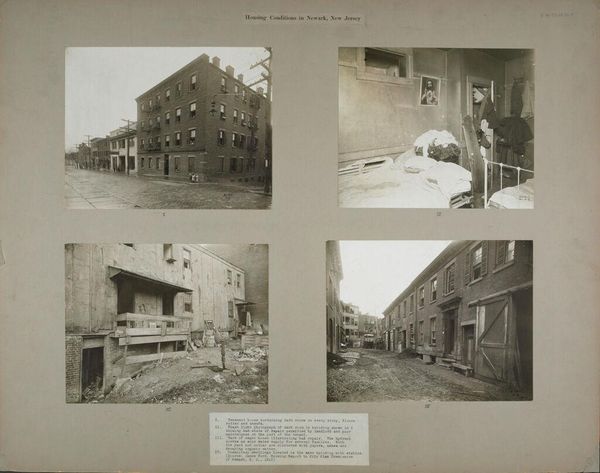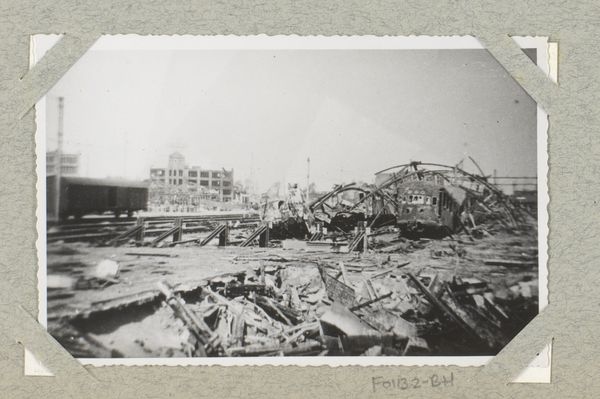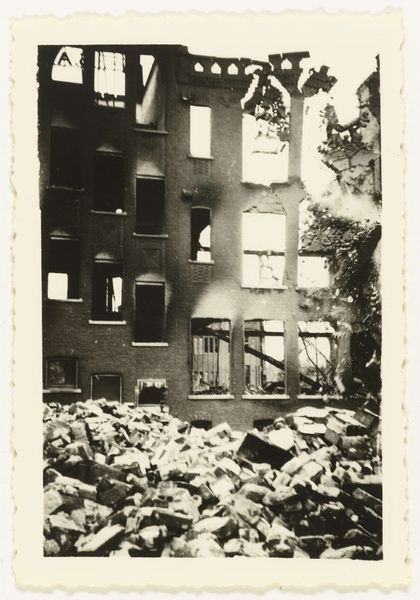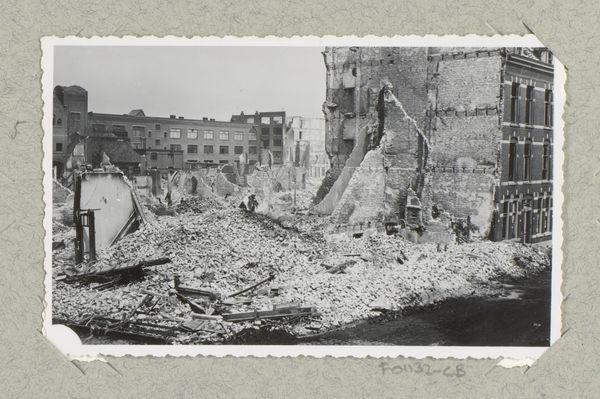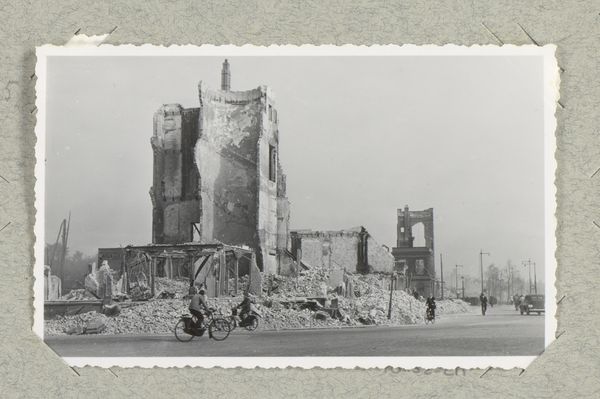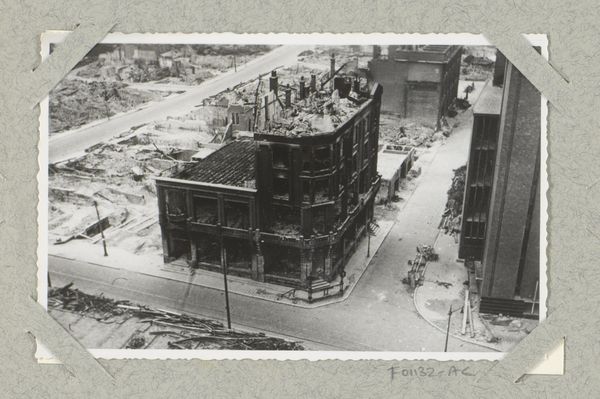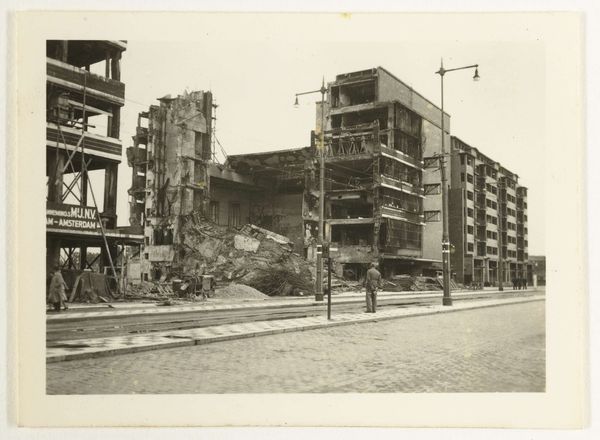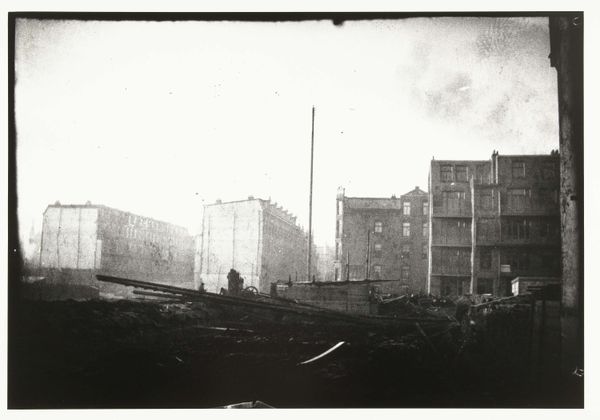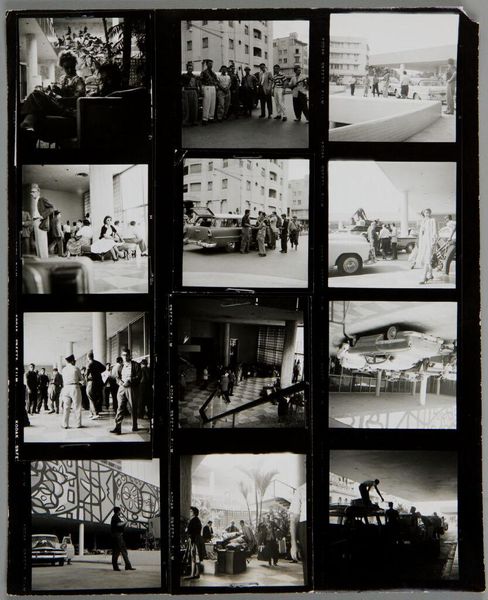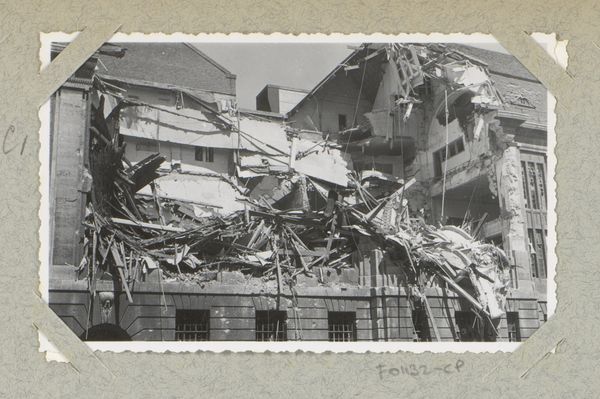
Dimensions: sheet: 20 x 25.3 cm (7 7/8 x 9 15/16 in.)
Copyright: National Gallery of Art: CC0 1.0
Editor: This gelatin silver print, "Trip with father--Milan no number," was taken in 1945 by Robert Frank. It looks like a collection of smaller images arranged together. The grainy black and white tones definitely create a somber mood. What do you see in the formal qualities of this piece? Curator: The nine images create a grid, but it is the visual rhymes and contrasts within this structure that are most compelling. Observe how Frank employs negative space, not only around each image but within them, often isolating fragments of buildings or the sky, drawing the eye through a rhythmic pattern of light and shadow. The formal qualities point towards a thematic exploration of destruction and resilience. How do you think Frank uses these contrasting ideas? Editor: The juxtaposition of ruin and people seems important, a sort of before-and-after narrative maybe. What is the role of realism? Curator: Realism is achieved not just through subject matter, the devastated architecture, but through Frank’s choice of a raw, documentary style. The slight blur and uneven lighting emphasizes that this is a scene as he found it, resisting romanticization. How might his use of a nine-image structure impact that sense of realism? Editor: It makes the image feel disjointed, as if memory or trauma prevents a cohesive picture of Milan, making each fragment speak volumes in isolation. Thank you for that perspective! Curator: Precisely. And looking closely at Frank’s deliberate arrangement and selection can open new pathways of understanding to how such images speak volumes of time, memory, and emotion.
Comments
No comments
Be the first to comment and join the conversation on the ultimate creative platform.
